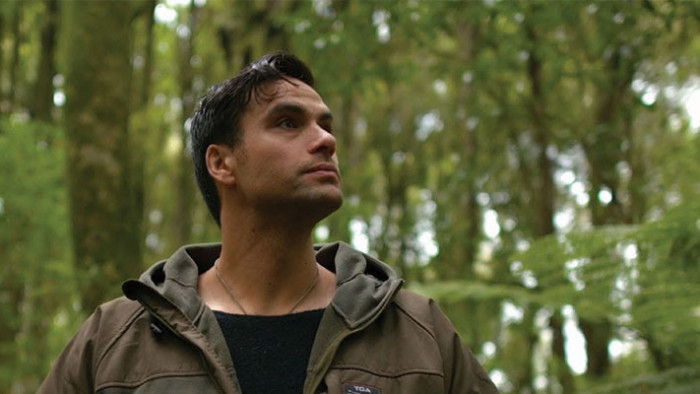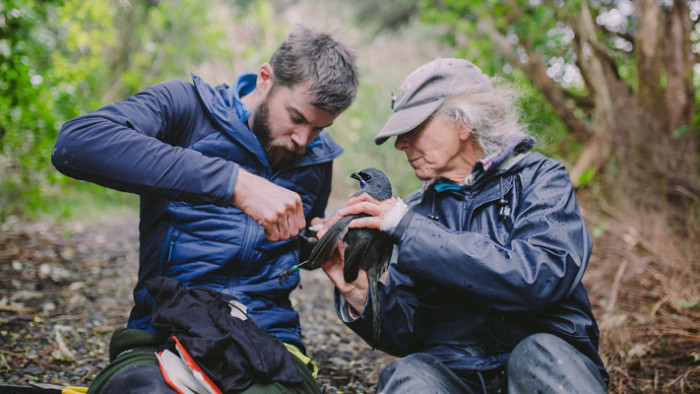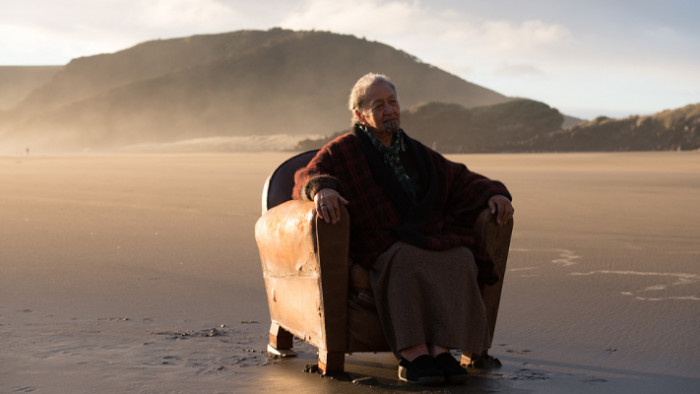2019 Biosecurity Awards finalists and winners
Winners of 10 awards were celebrated at the 2019 New Zealand Biosecurity Awards, with the supreme award going to Te Arawa Lakes Trust for Te Arawa Catfish Killas.
The annual awards celebrate people across New Zealand who are contributing to biosecurity – in our communities, businesses, iwi and hapū, government, in the bush, our oceans and waterways, and in our backyards.
Biosecurity New Zealand Supreme Award and the Department of Conservation Community Pihinga Award (for new initiatives/projects)
Winner: Te Arawa Lakes Trust - Biosecurity New Zealand Supreme Award and the Department of Conservation Community Pihinga Award
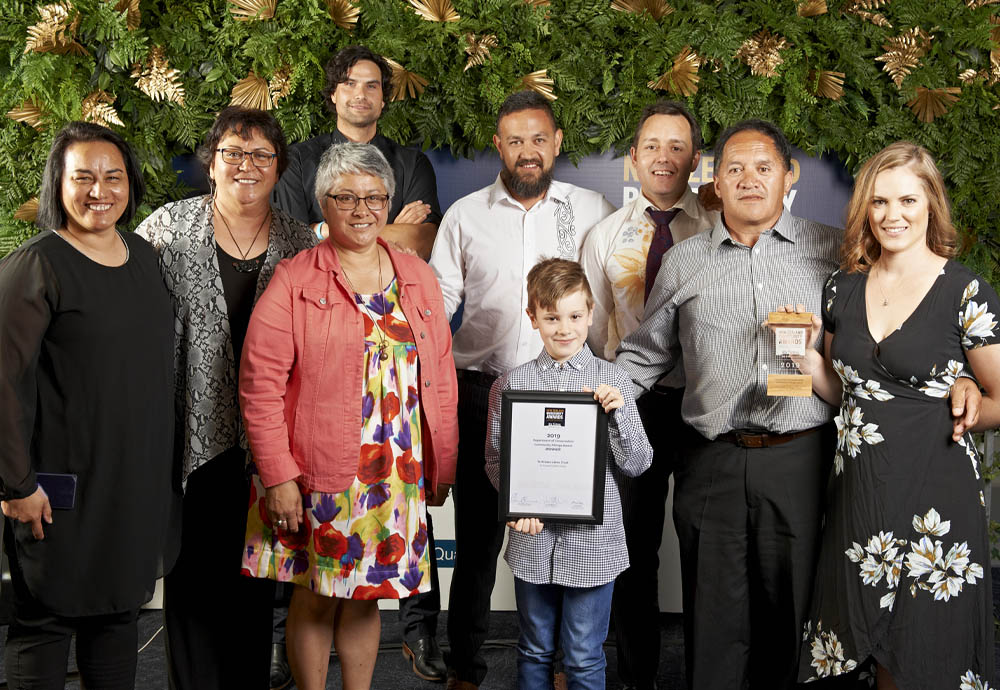
Project: Te Arawa Catfish Killas
Te Arawa Catfish Killas is a pest management initiative led by Te Arawa Lakes Trust (TALT) and Bay of Plenty Regional Council (BOPRC).
The initiative started in November 2018 in response to the 2016 incursion of catfish in Lake Rotoiti; one of the ancestral lakes of Te Arawa and under the mana whakahaere of TALT.
The response has now moved to long-term management with the establishment of catfish in Lake Rotorua.
Te Arawa Catfish Killas is a collaboration of one TALT staff member, multiple contractors and countless volunteers and hungaitiaki. They manage the catfish population with the use of fyke nets.
In addition, the Te Arawa Catfish Killas has worked to increase awareness of the threats posed by catfish and supported an increase in biosecurity practices to prevent the spread and establishment of catfish.
Te Arawa Catfish Killas is a great example of a biosecurity initiative using a Te Ao Māori approach to a contemporary issue.
Guided by tikanga and mātauranga, this initiative is a testament to true collaboration between mana whenua and local and central government.
Hear from our award winner:
Finalist: Aorere College, Year 10 Mātauranga Māori class - Department of Conservation Community Pihinga Award
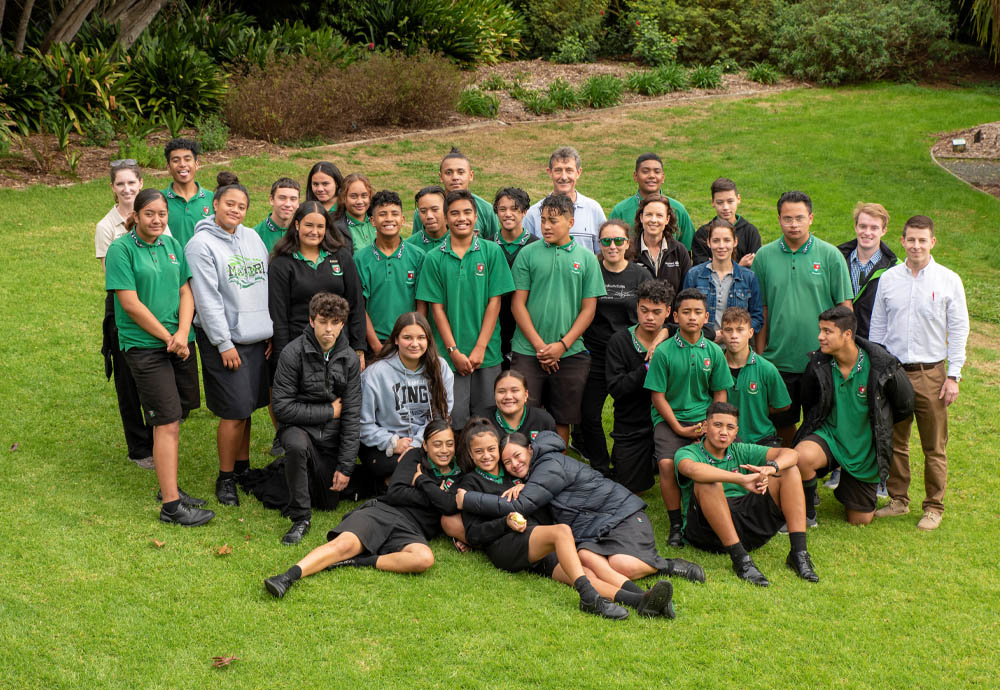
Project: Understanding rusts - fungal invaders of Aotearoa
The Year 10 Mātauranga Māori class at Aorere College is working with Plant & Food Research scientists to discover the role that research plays in ensuring maximum effectiveness of New Zealand’s biosecurity systems.
The project is supported through the Ministry of Business, Innovation and Employment’s 'Unlocking Curious Minds' fund.
The programme is focused on invasive species, particularly those that threaten our taonga trees like pōhutukawa, rātā and mānuka. Their work involves comparisons of exotic and native rust species, learning theoretical and experimental concepts used in research into unwanted plant diseases.
Classroom experiments have been a key learning method, including the analysis of fungal infection processes and the assessment of fungi and bacteria on plant leaves found in the local area. Students also supported myrtle rust surveillance in the Auckland Botanic Gardens, guided by identification keys for plants and diseases they developed themselves. Comments from the students included:
- “We found out that myrtle rust had originated from Brazil and its progression to New Zealand was carried out by the wind."
- "We learnt how to identify leaves because identification is helpful in classifying plant varieties and their families. Over time we found out that not all plants are or can be infected by this fungal disease.”
The students are also providing scientists with new perspectives on how to make biosecurity research more practical and engaging for the community. They have also shown an outstanding level of understanding and engagement with the subject matter, and are demonstrating that these concepts could be integrated into the science curriculum at an earlier age.
The Aorere College students are being equipped with the knowledge to be part of the solution around biosecurity issues in New Zealand and they deserve to be recognised for supporting New Zealand’s biosecurity efforts.
Finalist: Field trial: Ship rat control using modified 'Philproof' bait stations - Department of Conservation Community Pihinga Award
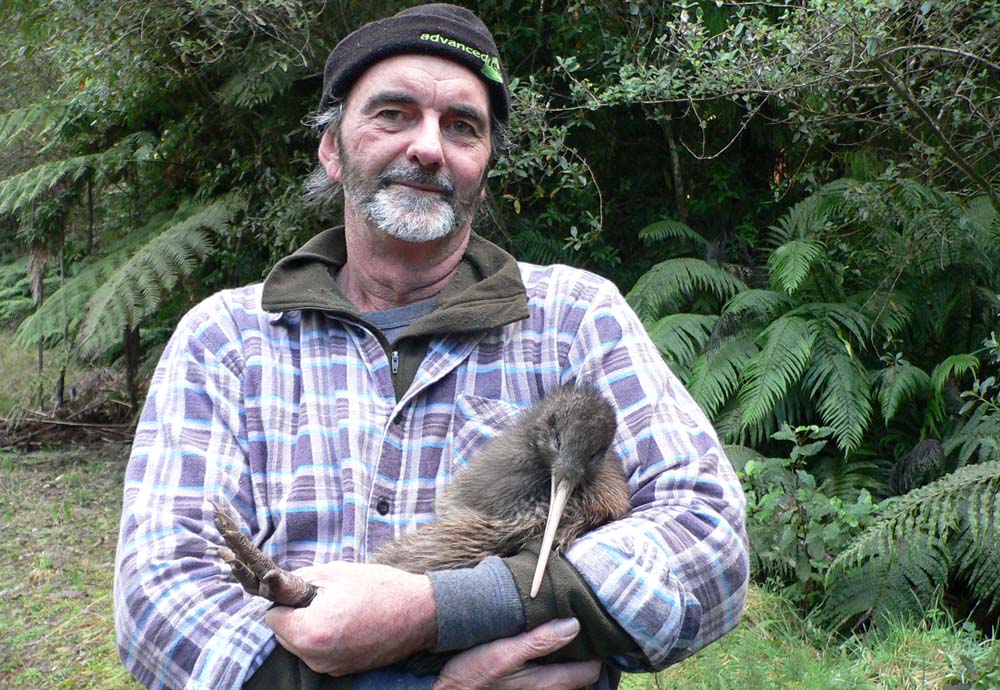
Ship rats are arguably the greatest threat to our native biodiversity. Given the rapid rate at which they breed, the benefits of carrying out additional ship rat control as a supplement to normal possum and ship rat bait station operations has long been known, but conservation groups have lacked simple tools to carry out the work.
In order to carry out efficient ship rat-only control using ‘Philproof’ bait stations, one needs to be able to exclude, or at least greatly restrict, a possum’s ability to feed from a bait station, but at the same time, not restrict rats from feeding at the bait station.
Designs to restrict possums from feeding at bait stations during times of ship rat only control were developed. They had to be simple, user-friendly and allow the use of all toxins that can currently be used in a ‘Philproof’ bait station.
Field trials were carried out at four sites within a podocarp-broadleaf forest in the Bay of Plenty between October 2017 and mid-February 2018. The behaviour of possums and rats was recorded with Moultrie trail cameras.
Following Dave Edwards' field trials, the modified bait stations were used in Rotorua's Forest & Bird Tikitapu Pest Control project.
Finalist: Tauranga Moana Biosecurity Capital - Department of Conservation Community Pihinga Award
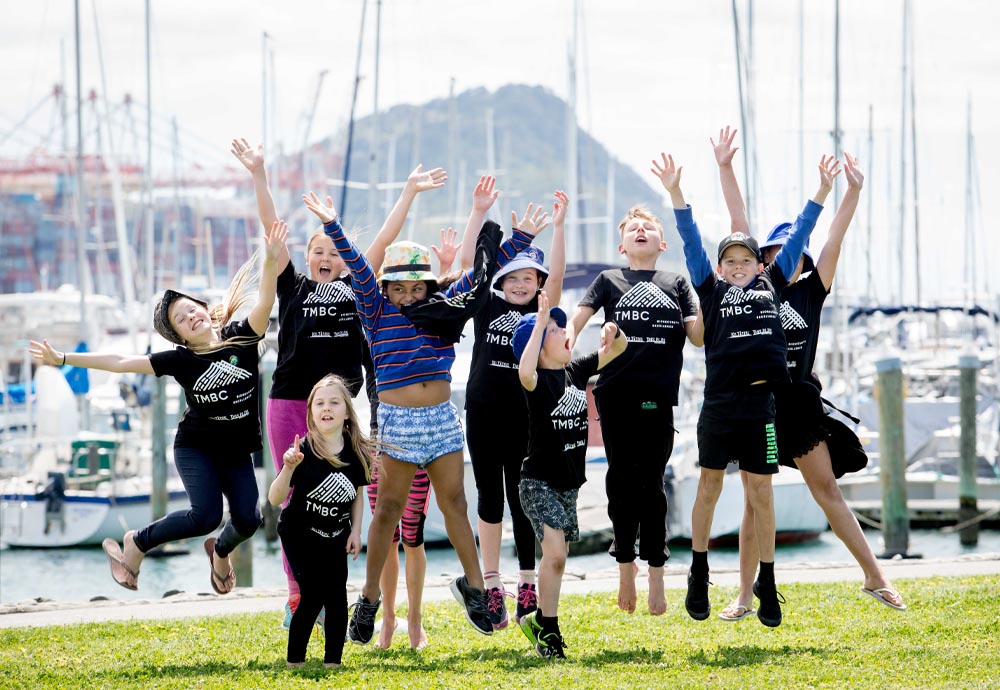
Tauranga Moana Biosecurity Capital (TMBC) is a collaboration that has its roots in a collective effort to build a biosecurity team of 4.7 million New Zealanders – to shift how we, as New Zealanders, think about biosecurity, how it connects to our everyday lives, and how people can get involved.
TMBC brings together a coalition of the willing and establishes Tauranga Moana iwi at the centre of a regional biosecurity team in a broad collaboration between iwi, community groups, industry, businesses, agencies, educators, scientists and others striving to achieve biosecurity excellence.
TMBC’s focus is on working with rangitahi in partnership with educators, connecting communities to the importance of biosecurity, and building social licence and collaboration between iwi, hapū, community organisations, industries, local businesses, science leaders, Mātauranga Māori experts, and central and local government.
Launched by the Minister for Biosecurity and Primary Industries Damien O’Connor in October 2018, TMBC is considered an exemplar for regional collaboration and partnership.
The group’s hope is that other regions will pick up and adapt the same model to extend biosecurity excellence across the country.
Minister's Biosecurity Award
Winner: David Cade - Minister's Biosecurity Award
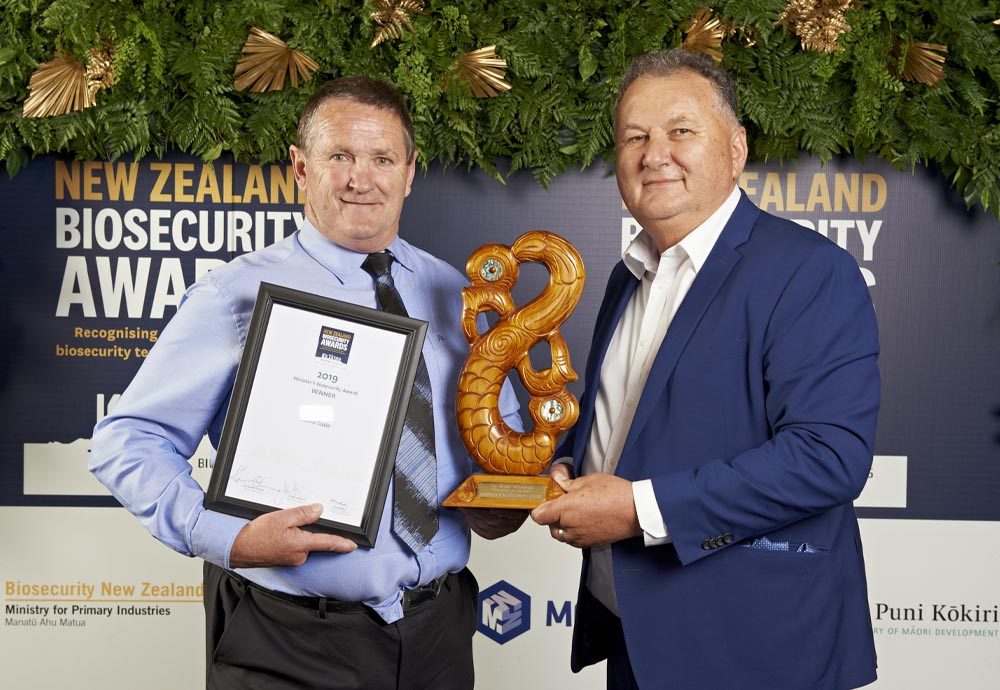
David Cade, commonly known as ‘Didymo Dave’, is a passionate and long-standing champion and volunteer for freshwater biosecurity, pest control and conservation; and a tireless promoter of the Check, Clean, Dry campaign to stop the transfer of freshwater pests and prevent the introduction of new ones.
Biosecurity Minister Damien O'Connor said, "David is a very worthy winner of this award – he has led from the grass roots.
“He’s widely known for being a passionate and long-standing champion and volunteer for freshwater biosecurity, pest control and conservation. He is a tireless promoter of the Check, Clean, Dry campaign to stop the transfer of freshwater pests and prevent the introduction of new ones," O'Connor said.
“David truly illustrates the impact a passionate person can have in making a difference for biosecurity in New Zealand."
Minister O’Connor was engaged in trade talks in Thailand so Forestry Minister Shane Jones presented the award on his behalf.
Hear from our award winner:
Department of Conservation Community Kahiwi Award for established projects/initiatives
Winner: Te Roroa Commercial Development Company - Department of Conservation Community Kahiwi Award
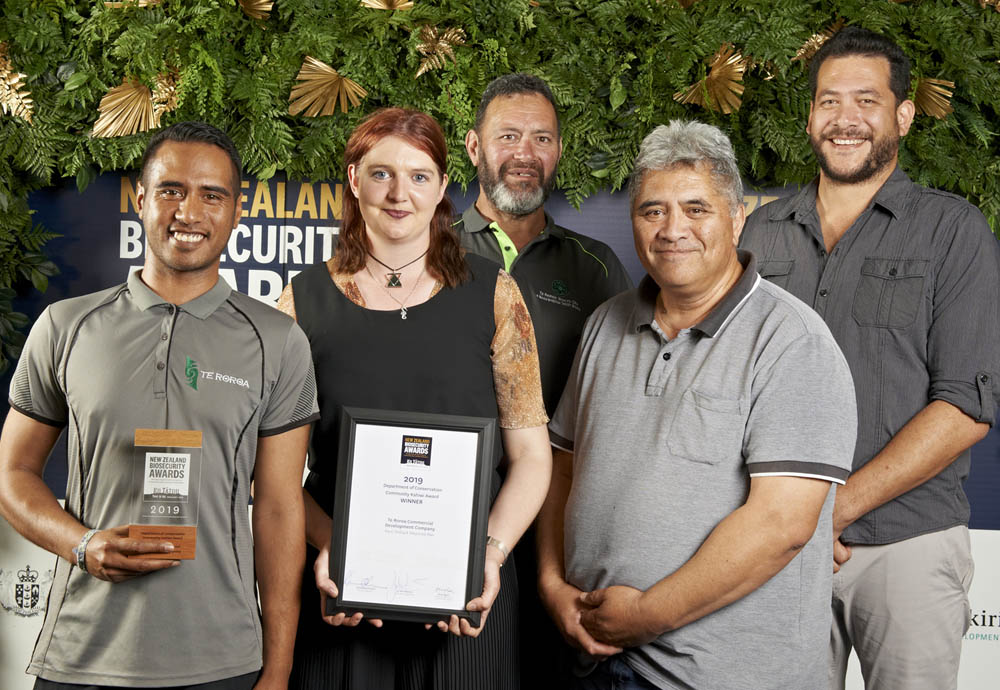
Project: Kauri Dieback Response Plan
"Ko au te ngahere, Ko te ngahere ko au, I am the forest and the forest is me."
This statement underpins the cultural and historic relationship connection Te Iwi o Te Roroa has with the Ngahere o Waipoua (Waipoua Forest) and is born from its concern, passion and deep-rooted responsibility they feel for the forest.
Te Roroa has shown outstanding leadership in response to the presence of kauri dieback being located close to Tane Mahuta in the forest. Being the kaitiaki of Waipoua ngahere, Te Roroa acted to provide leadership and advocate for a multi-agency approach to respond to this threat.
This threat lead Te Roroa to:
- develop a response plan to undertake biosecurity measures to mitigate further spread of the disease; and
- develop longer-term goals and objectives across the wider forest through implementation of the plan.
This required collaboration, co-ordination and approval of several stakeholders at a time when quick and critical decisions were required.
Te Roroa, being at the forefront of the plan’s development, implemented much of the workstreams resulting from the plan, and continue to lead the biosecurity on and around kauri dieback.
Hear from our award winner:
Finalists: Guardians of the Bay of Islands - Department of Conservation Community Kahiwi Award
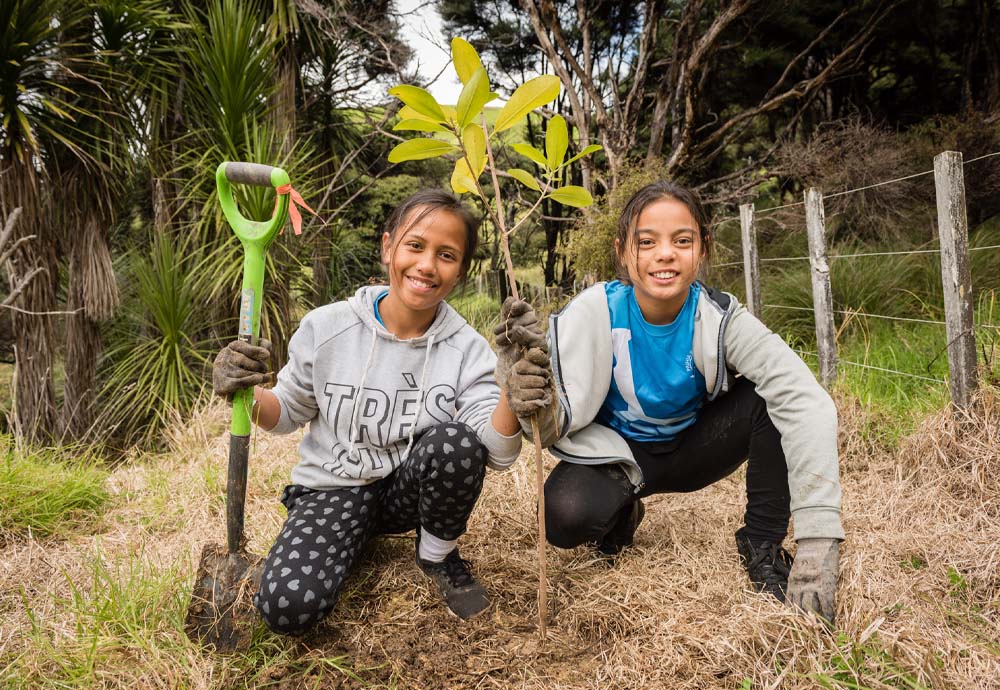
Project: Project Island Song
Project Island Song is about restoring the mauri or life force of the very depauperate islands of Ipipiri, the eastern Bay of Islands, after about 700 years of human habitation.
Guardians of the Bay of Islands was formed in 2006 and leads the management including fundraising for restoration using mostly volunteers.
The group has made a long-term commitment to restoring the natural values of the islands and their biosecurity and has provided continuing leadership for 12 years to date in concert with the Department of Conservation and local hapu Patu Keha and Ngati Kuta.
After eliminating all three species of rats and stoats by an aerial toxin drop in 2007, the group’s priority effort has been to retain the biosecurity of the islands so that it can provide an ongoing sanctuary for reintroduction of species long gone from the area.
Six species of birds or reptiles have been introduced to date, as well as considerable planting for habitat restoration, weed control, and education for local school children through the ‘Floating Classroom’ project.
Finalists: Polhill Protectors - Department of Conservation Community Kahiwi Award
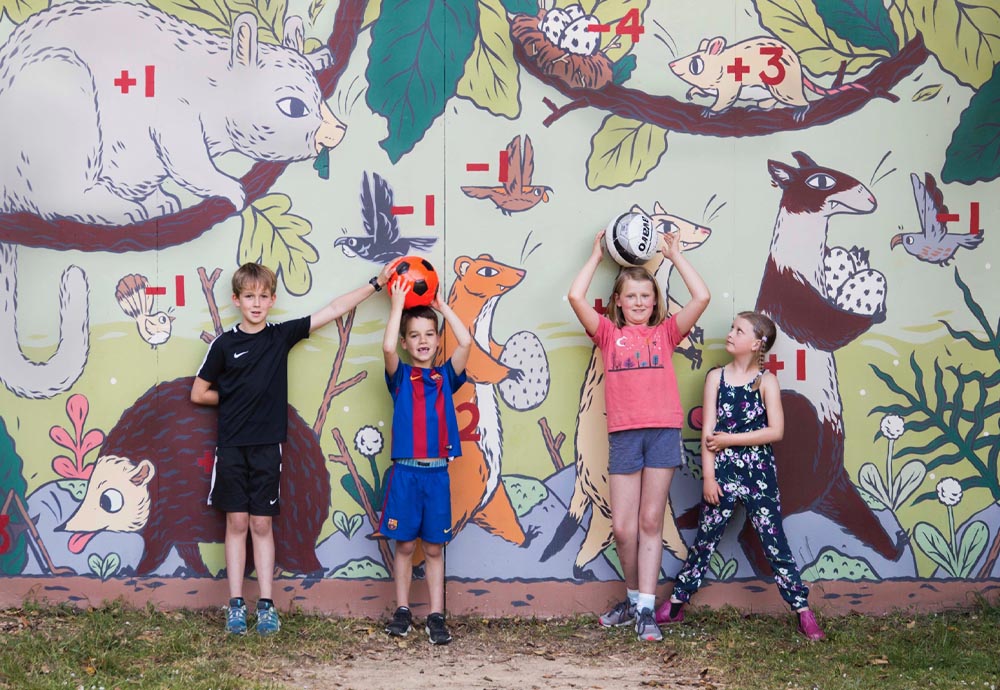
Project: Being neighbourly with our natives
Polhill Protectors is a ground-breaking urban conservation community laying out the welcome mat for manu taonga in Wellington city.
It consists of more than 70 trappers and a 900-strong Facebook group, who dedicate their time to control predators and engage in restoration efforts in the 70 hectare reserve, five minutes from downtown.
Polhill Protectors are hundreds of riders, runners, ramblers, residents, grannies, students and kids.
Polhill Reserve hosts Wellington’s most popular biking and running trails, and also hosts endangered wildlife courtesy of Zealandia eco-sanctuary, including kaka parrots, and most famously, tieke (saddleback).
Polhill Protectors has pioneered the use of social media as a conservation tool, and presented their recreation and conservation model (‘traps, trees and trails’ or ‘birds, bikes and beer’) at hui, including keynotes to NZILA, Kiwis for Kiwi, and Department of Conservation national conferences. Australia’s Threatened Species Commissioner has pitched Polhill as an inspiration: “Australia, can we do this too?”
Polhill Protectors has featured in National Geographic and The New York Times, was a finalist in Community Leadership in the 2017 Green Ribbon Awards, and won the Supreme Award at the 2017 Wellington Airport Wellington Community Awards.
Te Puni Kōkiri Māori Award
Winner: Ngāti Hauā Mahi Trust - Te Puni Kōkiri Māori Award
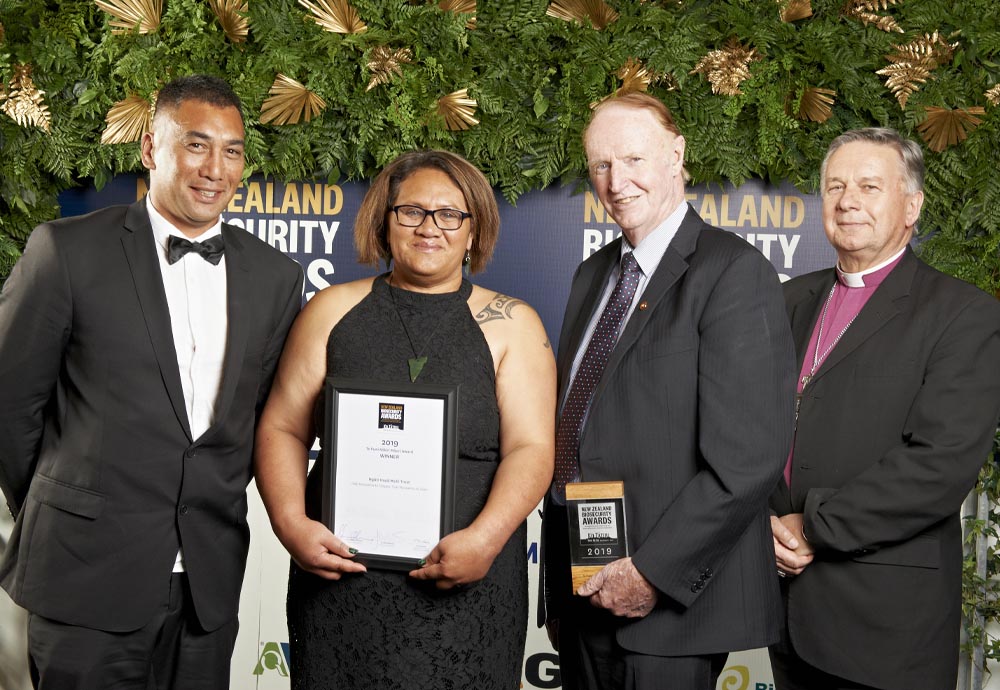
Project: Tiaki Manaakitia te Tangata, Tiaki Manaakitia te Taiao
More than 20 years ago, the Ngāti Hauā Mahi Trust was established by Ngāti Hauā kaumātua of the five marae within Ngāti Hauā at the time to bring iwi, church and community together.
Their kaumatua knew that Māori needed to work in partnership to have any chance of creating change for their people and making a difference for their precious environment.
In 2012, the Trust re-emerged with a vision: “Tiaki manaakitia te tangata, Tiaki manaakitia te Taiao” – ”Looking after our people, Looking after the environment”.
As a ‘flax roots’ organisation, the Trust began in 2012 with a passion to make a difference within the Ngāti Hauā rohe, with a vision of growing native plants and securing sustainable long-term funding.
To achieve biosecurity needs, the eco-sourced native plants need to thrive, which has highlighted the need for all employed to be competent in working within two worlds – Matauranga Māori and Matauranga Pakeha.
The Trust employs 12 kaitiaki who are leading environmentalists.
Its wetland restoration and riparian planting on culturally significant catchments – such as the Karapiro, Mangaonua, and Mangaone – feed directly into our awa tipuna ‘Waikato’.
Hear from our award winner:
Finalist: Rakiura Titi Islands Administering Body - Te Puni Kōkiri Māori Award
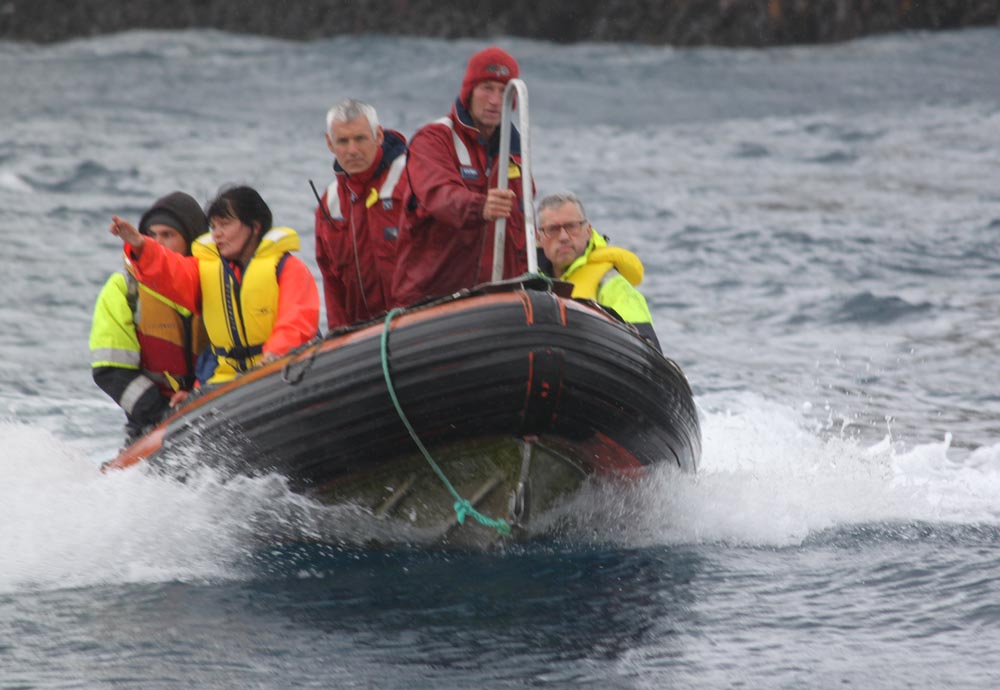
Project: Rikiura Titi Islands Biosecurity Plan
The purpose of the project is to allow Rakiura Māori to discharge their cultural kaitiakitanga obligations by preventing the establishment of pests on the Rakiura Titi Islands (“the Islands”), and thereby protecting taonga of the Islands.
Seventy percent of the Islands are rodent-free, some have never had rodents and others have had rats eradicated by Rakiura Māori with support from the Department of Conservation (DoC). The rodent-free status has enabled the transfer of taonga species to, and between, some of the islands and has further protected species already present.
Rakiura Māori are the only people who have rights to gather titi (muttonbirds) on the islands and travel to them to gather chicks each year in April and May. The harvest has huge cultural and economic significance for Rakiura Māori who have used titi as a food source and trade item for centuries.
The Rakiura Titi Islands Administering Body recognises the biosecurity risk presented by the annual titi harvest and began this project to advocate and improve biosecurity behaviours of the titi whanau using a rodent detection dog to check food and supplies destined for the Islands.
Finalist: Te Roroa Commercial Development Company - Te Puni Kōkiri Māori Award
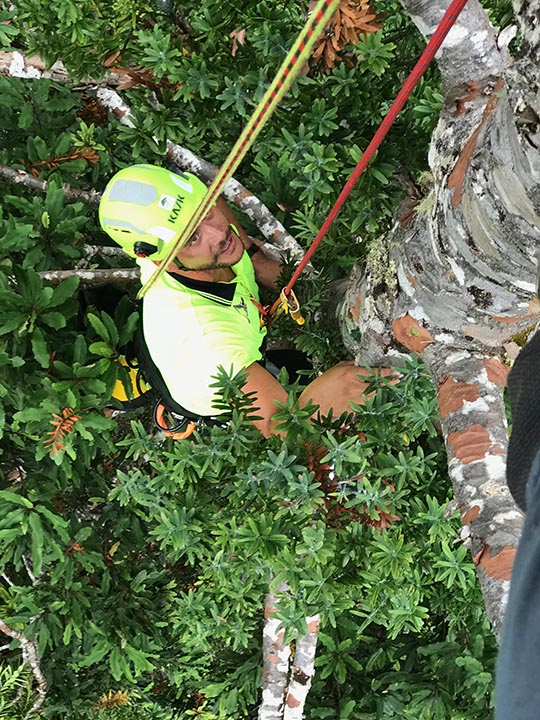
Project: Kauri Dieback Response Plan
"Ko au te ngahere, Ko te ngahere ko au, I am the forest and the forest is me."
This statement underpins the cultural and historic relationship and connection Te Iwi o Te Roroa has with the Ngahere o Waipoua (Waipoua Forest) and is born from its concern, passion and deep rooted responsibility they feel for the forest.
Te Roroa has shown outstanding leadership in response to the presence of kauri dieback being located close to Tane Mahuta in the forest. Being the kaitiaki of Waipoua ngahere, Te Roroa acted to provide leadership and advocate for a multi-agency approach to respond to this threat.
This threat lead Te Roroa to:
- develop a response plan to undertake biosecurity measures to mitigate further spread of the disease
- develop longer-term goals and objectives across the wider forest through implementation of the plan.
This required collaboration, co-ordination and approval of several stakeholders at a time when quick and critical decisions were required.
Te Roroa, being at the forefront of the plan’s development, implementation, and the workstreams resulting from the plan, continue to lead the biosecurity on and around kauri dieback.
GIA Industry Award
Winner: Livestock Improvement Corporation - GIA Industry Award
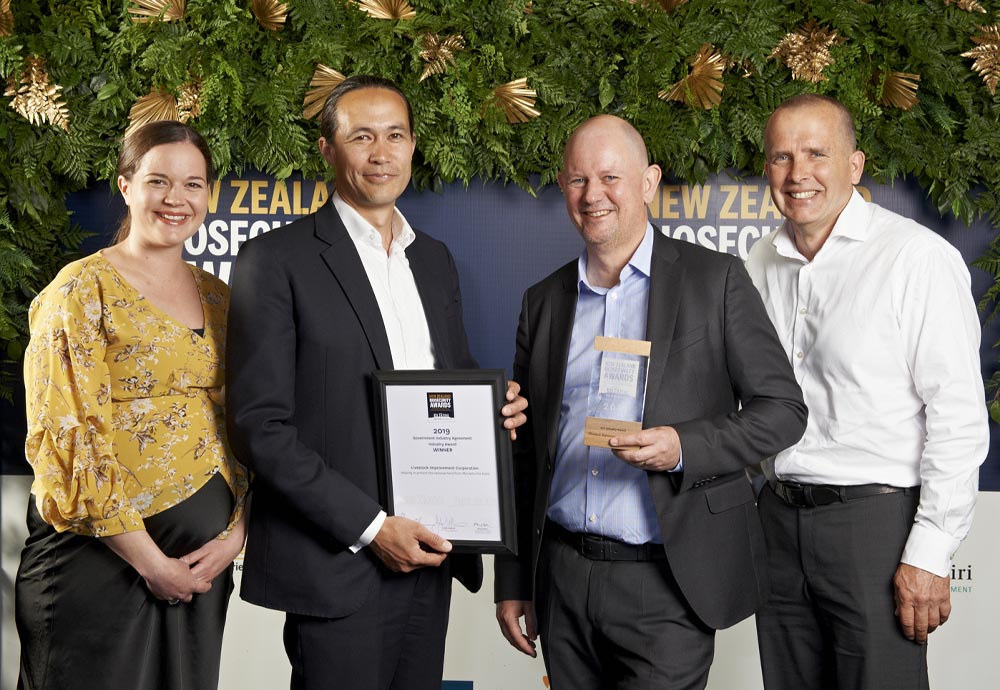
Project: Helping to protect the national herd from Mycoplasma bovis
When Mycoplasma bovis was confirmed in New Zealand in July 2017, LIC rapidly instigated a massive, company-wide biosecurity response.
New Zealand dairy farmers rely on LIC’s artificial breeding programme to get cows in calf every season. LIC felt that if they failed to eliminate the risk of spreading M. bovis, they would fail New Zealand dairy farmers.
In the past 18 months, LIC has implemented a comprehensive testing regime for its bulls and introduced rigorous MPI-approved, biosecurity protocols across all its business operations.
They partnered with the Ministry for Primary Industries at farmer meetings to help address questions and invented a method of tonsil swabbing live animals. Tonsils are the most reliable place to detect M. bovis in the head of an animal prior to bacteria entering the bloodstream. They performed the test on all their bull calves, along with blood testing.
They overturned its business as usual to implement a stringent daily semen testing regime with results confirmed before any semen was dispatched. M. bovis has not been detected in any sample.
As New Zealand continues to grapple with M. bovis, LIC continues to support dairy farmers, protecting the reputation and value of the New Zealand dairy industry through effective, workable, best practice in biosecurity.
Hear from our award winner:
Finalist: Automotive Technologies Ltd - GIA Industry Awards
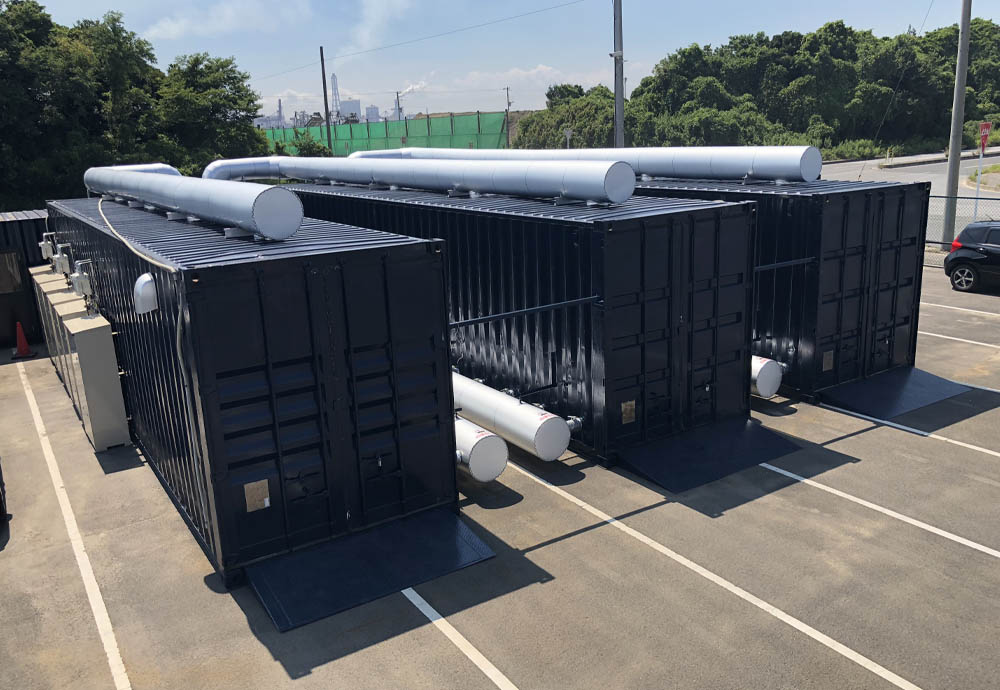
Project: Heat treatment
Automotive Technologies Limited (ATL) is a Japan-based, New Zealand-owned biosecurity inspection and treatment company dedicated to providing the highest level of biosecurity protection for New Zealand.
After the 2018 brown marmorated stink bug issues on vehicles from Japan, ATL set about designing and building its own specialised heat treatment facilities designed specifically for the effective heat treatment of vehicles.
The company completely designed its heat treatment system from scratch. They built and tested multiple versions, overcame issues and improved the design until they were completely happy with the design and functionality.
The project started in April 2018 and all sites were operational within just five months, successfully running throughout the 2018/2019 season.
Finalist: KiwiNet - GIA Industry Award
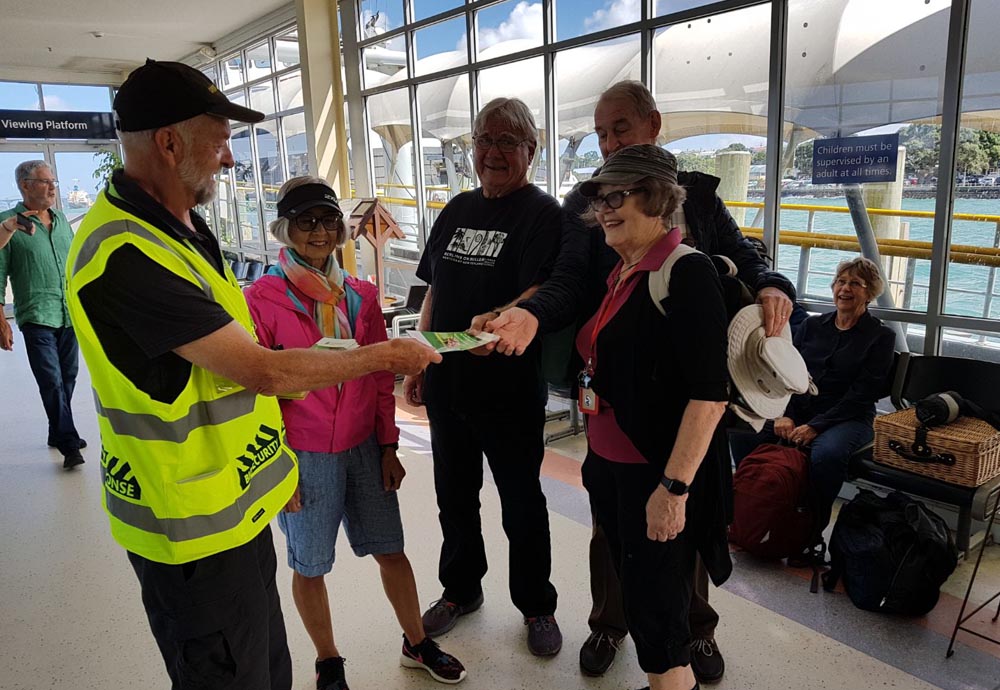
Project: KiwiNet geared up to fight threats
KiwiNet is a leading network of approximately 100 biosecurity advocates from more than 30 organisations, dedicated to supporting the New Zealand kiwifruit industry.
The network has evolved into a well-established team of people from across the industry (including all post-harvest/pack-house organisations) who champion biosecurity awareness and readiness and co-ordinate the deployment of resources into biosecurity responses.
Members of KiwiNet work in partnership to retain and build on lessons learned from the Psa experience and increase knowledge and preparedness about biosecurity so that potential impacts to the kiwifruit industry of another major biosecurity incursion are reduced.
The secret to KiwiNet’s success has been in enabling a committed industry-wide approach to biosecurity readiness and response.
The model is seen as an exemplar by other industries looking to ensure similarly successful biosecurity outcomes.
Eagle Technology Local and Central Government Award
Winner: Auckland Council - Eagle Technology Local and Central Government Award
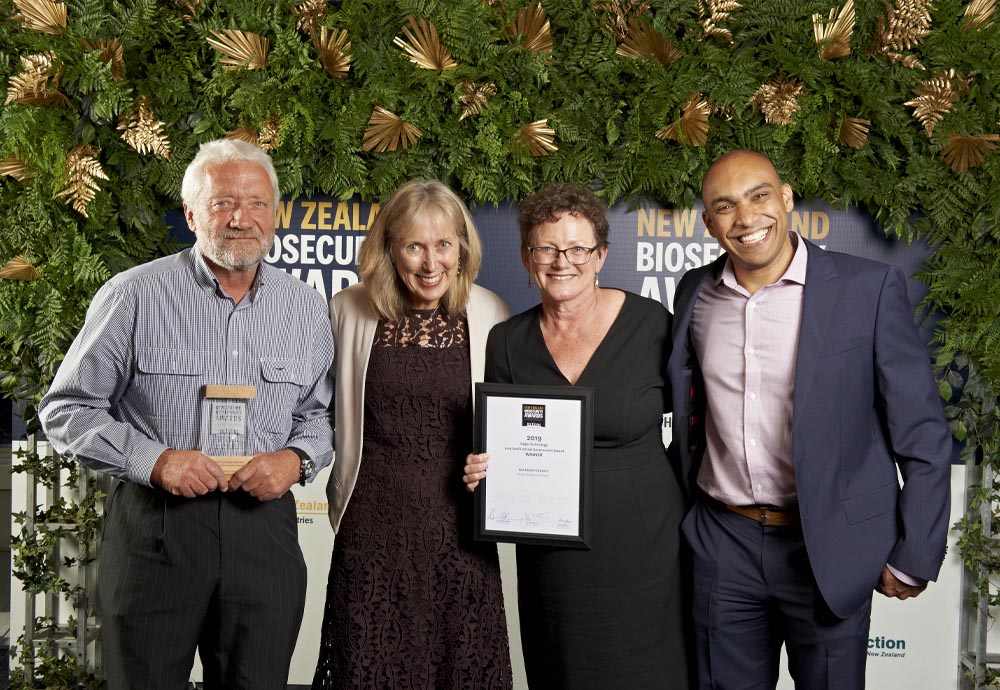
Project: Auckland Council's Island Biosecurity Team
Auckland Council's Island Biosecurity team is responsible for protecting the natural and ecological values of the islands in the Hauraki Gulf. The Gulf is nationally significant for seabird, terrestrial and marine values, and its pest-free islands contribute to many national conservation goals.
These islands provide defendable refugia for vulnerable native biodiversity against invasive species, with generally less pests and higher biosecurity values than the mainland and a natural water barrier to help prevent pest incursions.
The Island Biosecurity team protects these valuable islands through the Hauraki Gulf Controlled Area Notice, advocacy and partnerships.
Two primary initiatives are carried out in partnership with the Department of Conservation.
The first of these initiatives – Pest Free Warrants, seeks to regulate commercial operators in the Hauraki Gulf, particularly those going to pest-free islands. These operators’ access to pest-free islands is restricted unless they qualify for a warrant by meeting biosecurity standards.
The second initiative – Pest Free Hauraki Gulf (formerly Treasure Islands), seeks to work towards and maintain the existing pest-free status of Gulf islands by preventing spread and establishment; and controlling, eradicating and promoting public awareness of the threat of rodents, mustelids, possums, Argentine ants, pigs, plague skinks and certain weed species.
Hear from our award winner:
Finalists: Environment Canterbury (Chatham Islands) - Eagle Technology Local and Central Government Award
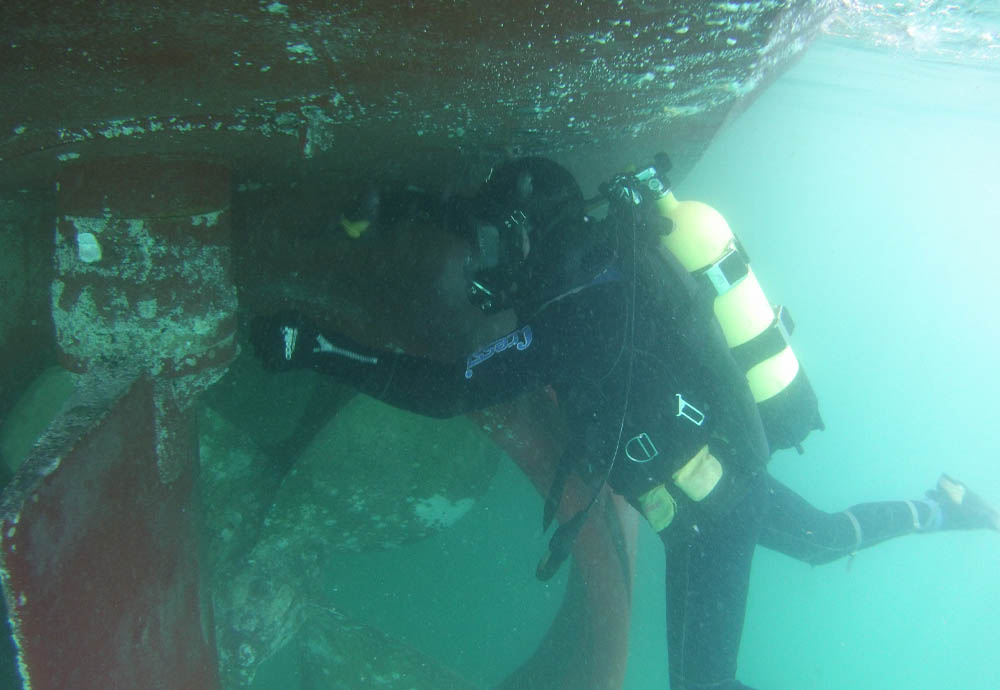
Project: Chatham Island Biosecurity
Environment Canterbury is contracted to the Chatham Islands Council to carry out a variety of regulatory tasks. By far the biggest (and most important) is the management and implementation of biosecurity measures and activities.
The Chathams are a group of 11 islands located 863 km east of Christchurch. Just two of these Islands are inhabited.
The Islands are home to a multitude of endemic, threatened and endangered species. The Islanders themselves are fiercely protective and proud of their Islands, and this is reflected in their passion and support of biosecurity.
Finalist: Wellington City Council - Eagle Technology Local and Central Government Award
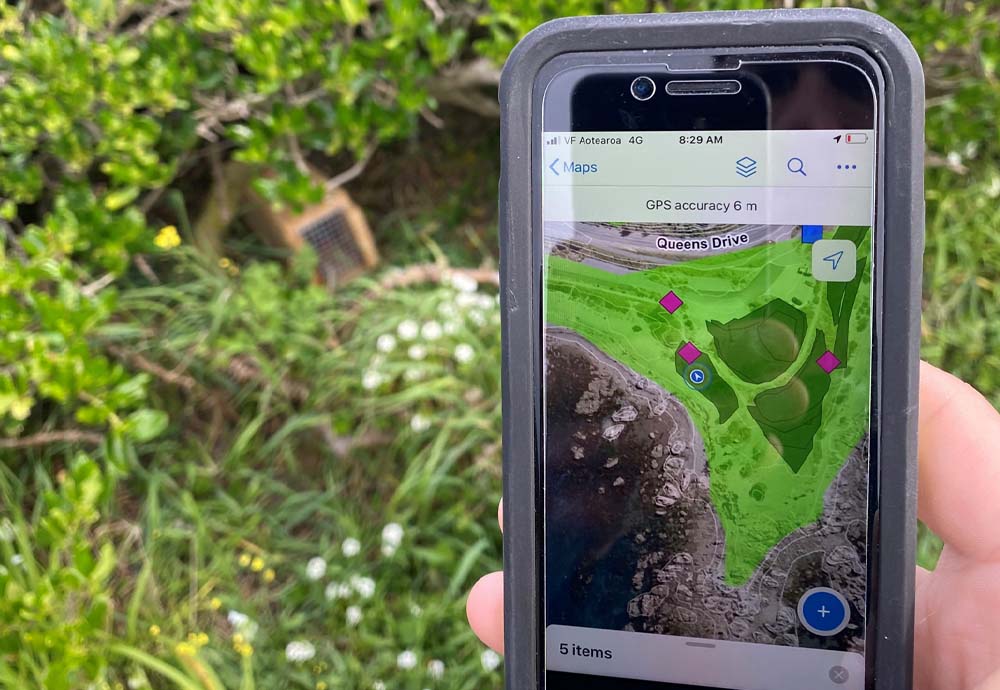
Project: Wildlife Safe Wellington
Wellington City Council has been committed to a body of work that supports biosecurity in New Zealand. What is more, it has shown leadership in biosecurity where there is not the regulatory mandate for local authorities as exists for central government and regional councils.
The biosecurity programme covers a network of animal pest controls, which includes 2400 bait stations throughout the city, 3500 traps in reserves, as well as a robust hunting operation for goats, pigs, and rabbits, in collaboration with private land owners.
The team takes biosecurity threats seriously and is ready to take action.
Wellington Botanic Gardens has been monitoring for myrtle rust since its first diagnosis in Australia in 2010 and has been very involved in the development of a local surveillance programme as well as leading research into the cryopreservation for Syzyigium maire.
Wellington City Council is committed to continuous improvement and the development of systems that improve data sharing and enable effective decision making.
It has shared innovative models, spearheaded training programmes, collaborated in funding national data standardisation, and actively shared what it has learned with the biosecurity community – locally with the conservation community, as well as regionally, nationally and internationally.
Bio-Protection Research Centre Science Award
Winner: Myrtle Rust Research Consortium - Bio-Protection Research Centre Science Award
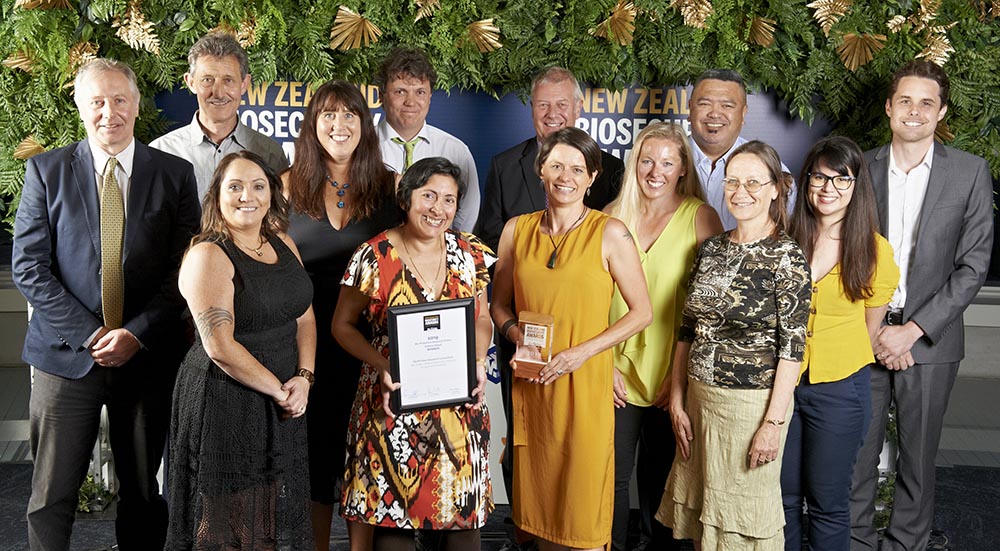
Project: Ngā taonga - Safeguarding the mauri of myrtles and dependent ecosystems
The Myrtle Rust Research Consortium outlined an integrated and rapid research response to myrtle rust.
Myrtle rust (caused by Austropuccinia psidii) was found for the first time in New Zealand in March 2017. The disease has devastated ecosystems in Australia and impacts for New Zealand could be similar if there is no intervention.
Since the incursion in Australia, New Zealand’s government and science groups had been developing readiness. When the pathogen was detected here, a response was initiated.
Within a short period of time, a comprehensive research programme was assembled and commissioned through the Ministry for Primary Industries (MPI) and Ministry for Business, Innovation and Employment (MBIE).
As a group, government (MPI, Department of Conservation, MBIE), the science community, iwi, industry stakeholders and other key organisations worked together via workshops, interactive research networks and a Myrtle Rust Strategic Science Advisory Group to design and undertake high-quality research, delivering tools and knowledge to safeguard New Zealand’s taonga (treasured) species and at-risk ecosystems.
Research was targeted to resolve fundamental questions about myrtle rust biology and how this disease affects myrtaceous hosts in the New Zealand environment.
Outcomes have addressed Te Ao Māori perspectives, building effective community engagement and social license, and identifying methods to survey, treat and control.
Hear from our award winner:
Finalist: Cawthron Institute - Bio-Protection Research Centre Science Award
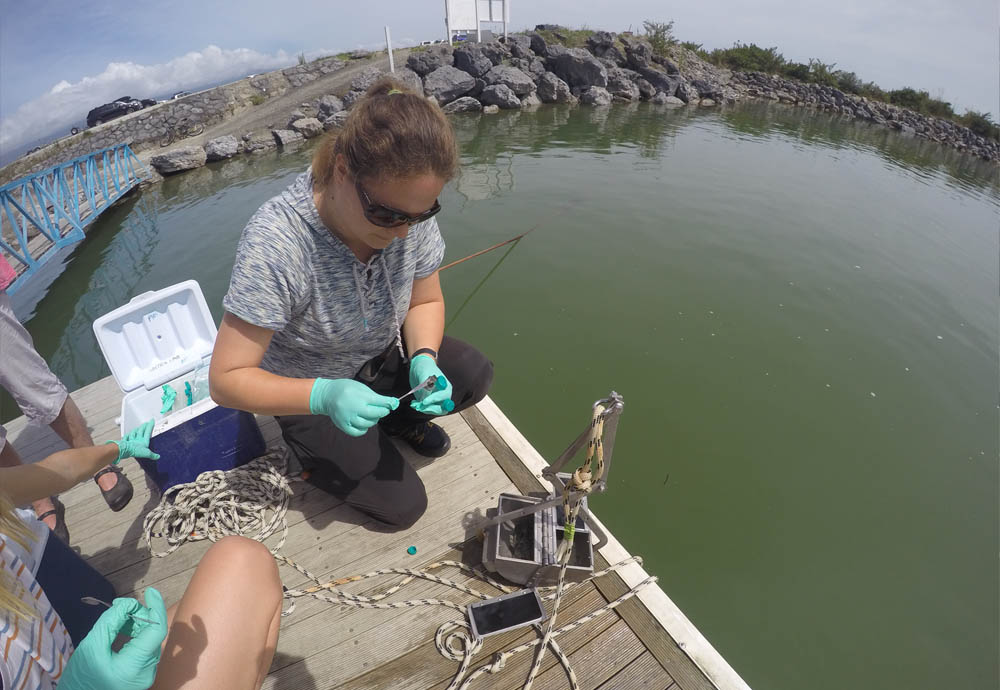
Project: Molecular tools for aquatic pest detection
Cawthron has made a distinct contribution to New Zealand’s oversized global influence on biosecurity management and policy through innovation of molecular methods for more sensitive and reliable aquatic pest detection.
Its pioneering development of high-throughput sequencing (HTS) and quantitative PCR assays in aquatic biosecurity is guiding real-world responses for vector management, invasion surveillance, and pest incursion.
For example, it has used its molecular pest detection methods to:
- quantify when problematic species establish in marine biofouling communities to guide risk-profiling and interventions
- understand invader community dynamics during cross-latitudinal transfer to determine what invaders are likely to survive and how they can be managed
- identify new vectors, such as bilge water discharge, for comprehensive biosecurity systems.
Each of these examples are critically supporting biosecurity outcomes, optimising management strategies and altering perceptions regarding the tractability of aquatic biosecurity.
Building on its fundamental contributions to biosecurity risk management, five regional councils are now using its methods to inform eradication and spread limitation strategies in the ongoing fight against the highly invasive Mediterranean fan worm.
Cawthron is further leveraging its achievements to lead a multi-national research consortium that is standardising molecular approaches to revolutionise aquatic invader detection and end-user response strategies around the world.
Finalist: SCION - HTHF Research Programme - Bio-Protection Research Centre Science Award
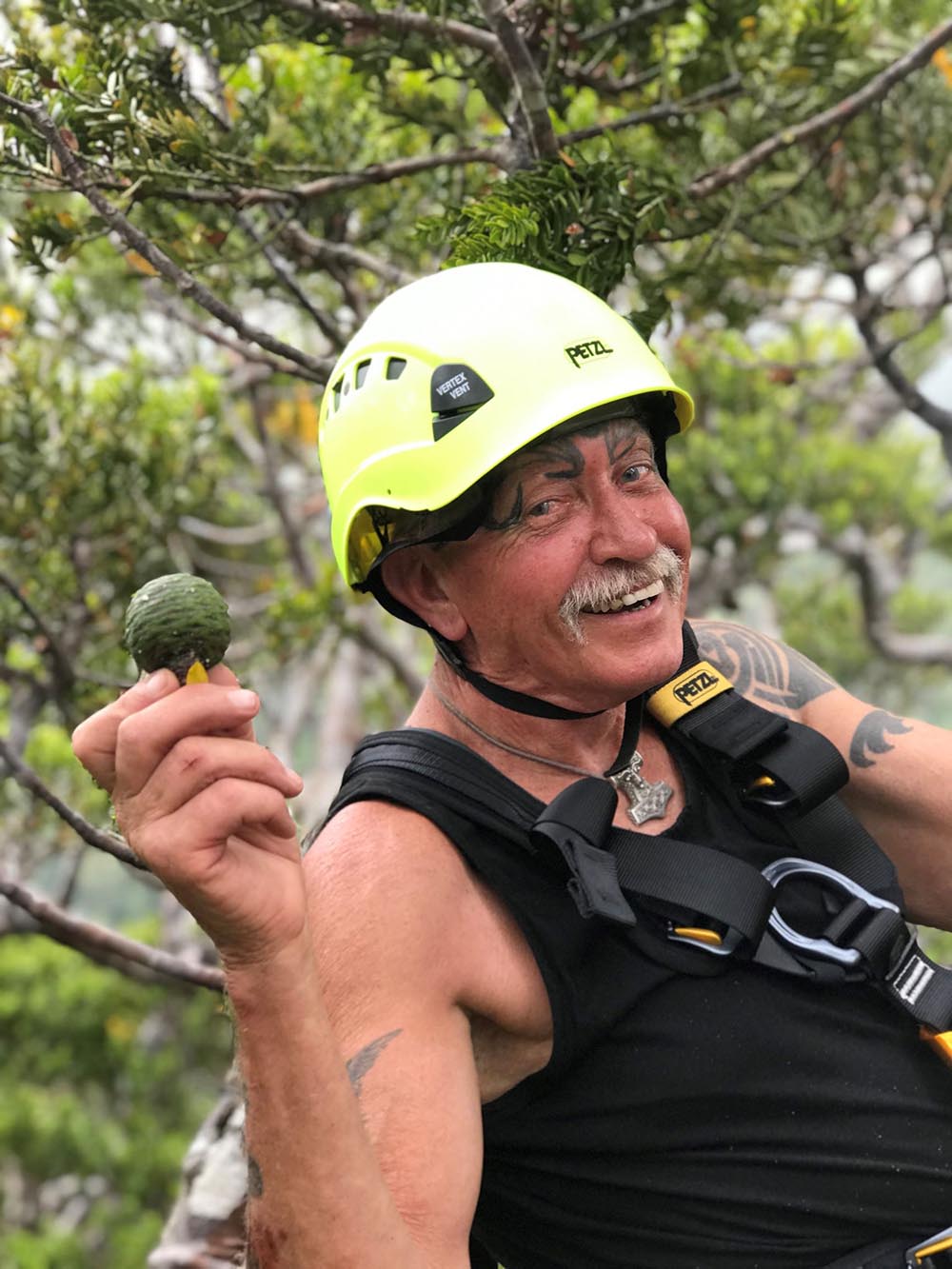
Project: Healthy Trees, Healthy Future: Enabling technologies to combat Phytophthora diseases
New Zealand’s ability to identify, respond and manage Phytophthora disease outbreaks and incursions is now substantially strengthened by Healthy Trees Healthy Future (HTHF) science and research.
SCION better understands Phytophthora challenges globally and locally, with a focus on those impacting New Zealand’s kauri, radiata pine and apple assets.
It has added considerably to the knowledge informing biosecurity and management of Phytophthora pathogens through:
- genomic and transcriptomic data resources: being the first team to sequence and re-sequence the genomes of key species of importance to New Zealand’s tree estates, driving a substantial advance in pathogen research, analytical capacity and comparative genomic analyses
- population analyses for key Phytophthora species have directly informed the response and management of the invasive P. pluvialis, endemic P. kernoviae, and newly described P. aleotoria, with P. agathidicida in progress.
- establishing a kauri resource for resistance screening in partnership with mana whenua
- identifying resistance to Phytophthora within radiata pine, kauri and apple
- identifying key genes associated with Phytophthora infection processes which are being developed into high throughput screening methods
- creating epidemiological models for red needle cast informing the deployment of resistant germplasm and improved effectiveness of chemical control
- building a comprehensive domestic and international network of researchers.
Mondiale Innovation Award
Winner: Automotive Technologies Ltd - Mondiale Innovation Award
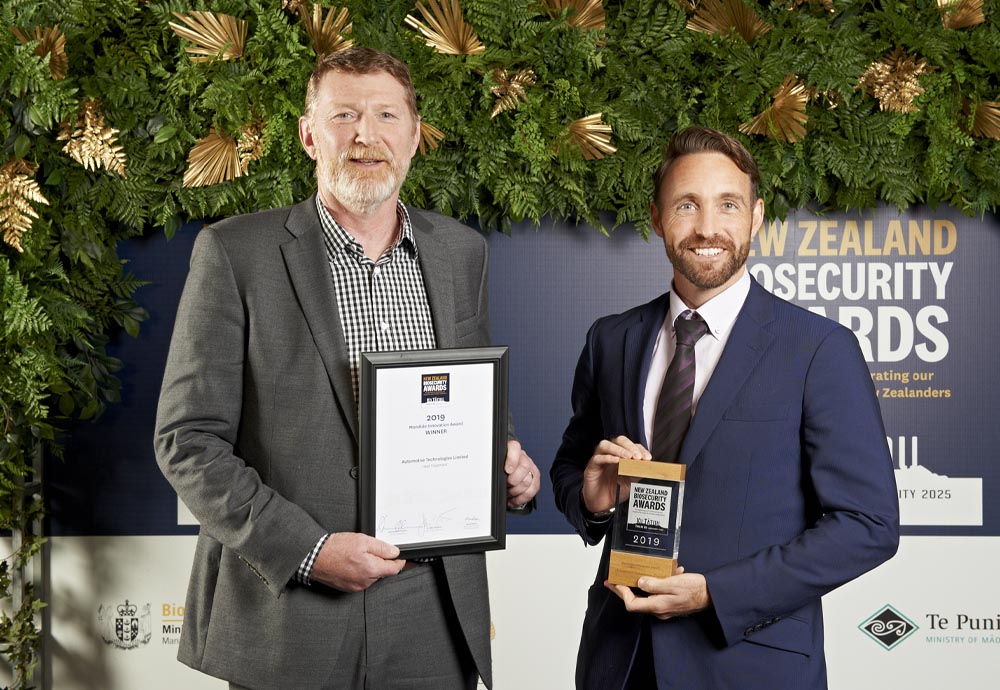
Project: Heat treatment
Automotive Technologies Limited (ATL) is a Japan-based, New Zealand-owned biosecurity inspection and treatment company dedicated to providing the highest level of biosecurity protection for New Zealand.
After the 2018 brown marmorated stink bug issues on vehicles from Japan, ATL set about designing and building its own specialised heat treatment facilities designed specifically for the effective heat treatment of vehicles.
It completely designed its heat treatment system from scratch. It built and tested multiple versions, overcame issues and improved its design until its was completely happy with its design and functionality.
The project started in April 2018 and all sites were operational within just five months, successfully running throughout the 2018/2019 season.
Innovation played a huge part in the setup of ATL’s heat treatment system. There are no off the shelf heat treatment chambers available in the marketplace specifically designed for the heat treatment of vehicles to kill insects.
While paint drying rooms and kiln units would have done the job, as they were not specifically designed for the heat treatment of vehicles ATL felt that the risk to New Zealand was too high.
To get the best results and fully understand its systems, ATL decided that a fully customised solution was best. Working to a very short time frame, ATL was able to fully design and implement its own heat treatment systems.
Hear from our award winner:
Finalist: Livestock Improvement Corporation - Mondiale Innovation Award

Project: Helping to protect the national herd from Mycoplasma bovis
When Mycoplasma bovis (M. bovis) was confirmed in New Zealand in July 2017, LIC rapidly instigated a massive, company-wide biosecurity response.
New Zealand dairy farmers rely on LIC’s artificial breeding (AB) programme to get cows in calf every season. LIC felt that if it failed to eliminate the risk of spreading M. bovis, it would have failed NZ dairy farmers.
In the last 18 months, it has implemented a comprehensive testing regime for their bulls and introduced rigorous MPI-approved, biosecurity protocols across its business operations.
It partnered with MPI at farmer meetings to help address questions and invented a method of tonsil swabbing live animals. Tonsils are the most reliable place to detect M. bovis in the head of an animal prior to bacteria entering the bloodstream. LIC performed the test on all its bull calves along with blood testing.
It overturned its business as usual to implement a stringent daily semen testing regime with results confirmed before any semen was dispatched. M. bovis has not been detected in any sample.
As New Zealand continues to grapple with M. bovis, LIC continues to support dairy farmers, protecting the reputation and value of the New Zealand dairy industry through effective, workable, best practice in biosecurity.
LIC completely overhauled business processes that had been refined over many years to ensure that it implemented best practice biosecurity protocols. The complete transformation of its operational processes illustrates how innovation contributed to the success of its response to M. bovis.
Finalist: Omori Kuratau Pest Management Group - Mondiale Innovation Award
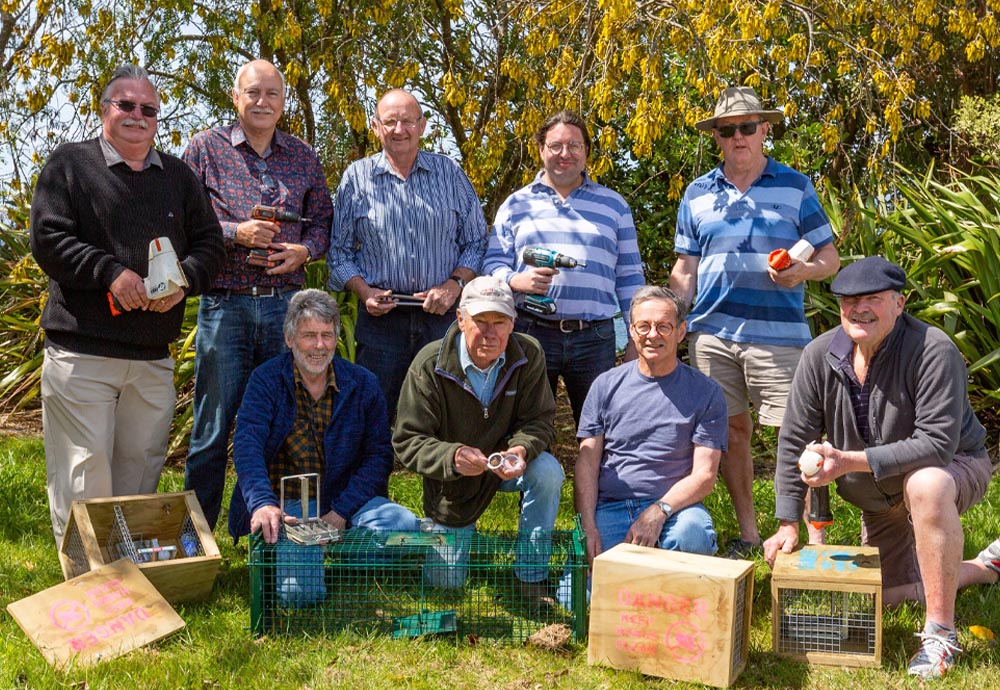
Project: Omori Kuratau Pest Management Group
Omori/Kuratau is an area of considerable beauty on the south western shores of Lake Taupo. Special features of this area include the now regenerating native bush, the bush walks it provides for locals and visitors, and the increasing bird life supported by the bush.
The aim of the Omori Kuratau Pest Management Group is to bring back the bush by bringing back the birds that disperse the seeds.
A secondary aim of their programme is to improve the recreational experience for the locals and several thousand annual visitors who enjoy the native bush walks, made even more special by the addition of bird song and sightings with the return of native birds.
A major innovative success was solving the major problem of mice (that are not heavy enough to set off the ‘DoC 200’ trap), removing the solid fish-based lures from the traps which often meant the replacement of up to 150 lures per week plus the regular unwanted cost of new lures.
The group tried a nail to place the lures on, which worked for one year. They placed prickly hair curlers over the top of the lures on the nails which worked for nearly two years. Even mouse traps inside the main trap didn’t work. Lures were still taken out for eating.
Then they solved it. They imported over 300 stainless steel sphere clip-lock tea infusers from Aliexpress in China. The lure was placed inside the infuser and clipped shut and placed on the nail. It really works and other groups are now using this method too.
AsureQuality Emerging Leader Award
Winner: Kane McElrea from Northland Regional Council - AsureQuality Emerging Leader Award
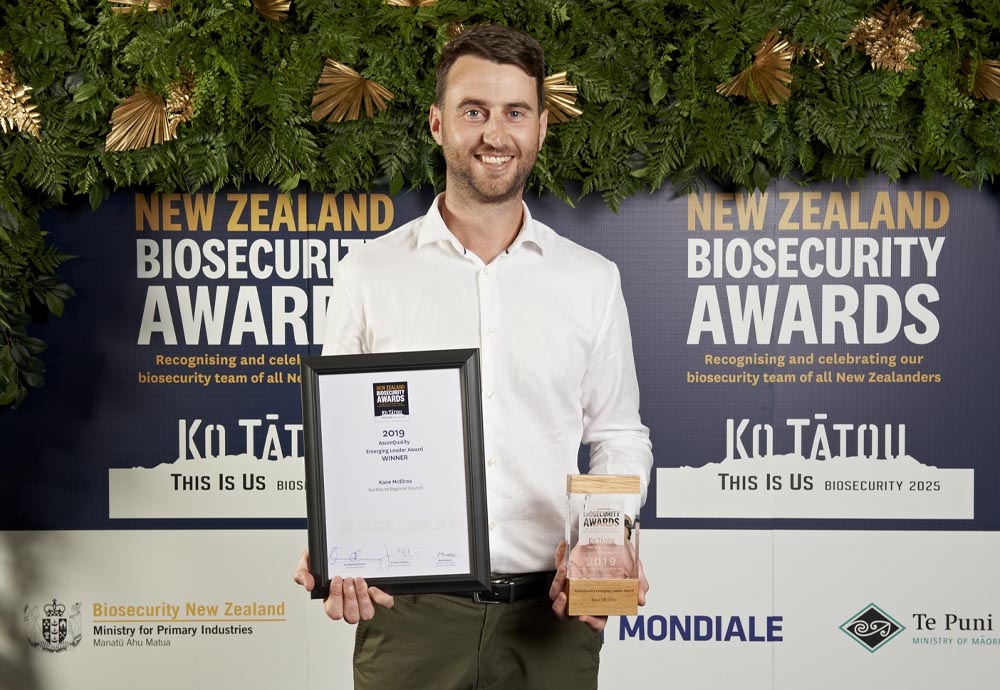
Kane is an outstanding young man who, over the last nine years, has fully utilised his farming background and formal environmental education to forge sustainable community and iwi-led biosecurity programmes and help turn the tide on dwindling kiwi populations across Northland.
His training includes gaining a bachelor’s degree in applied environmental science and a marine science diploma. He has had previous employment with Auckland Council open sanctuaries and has assisted with pest incursions and farm management. He currently leads a major programme of pest management within Northland Regional Council.
Kane demonstrates great leadership skills and has the ability to realise the potential of others around him in an engaging and positive way. These leadership qualities transfer to his ability to work successfully with communities.
Hear from our award winner:
Finalist: Helen Payn from Land Information New Zealand - AsureQuality Emerging Leader Award
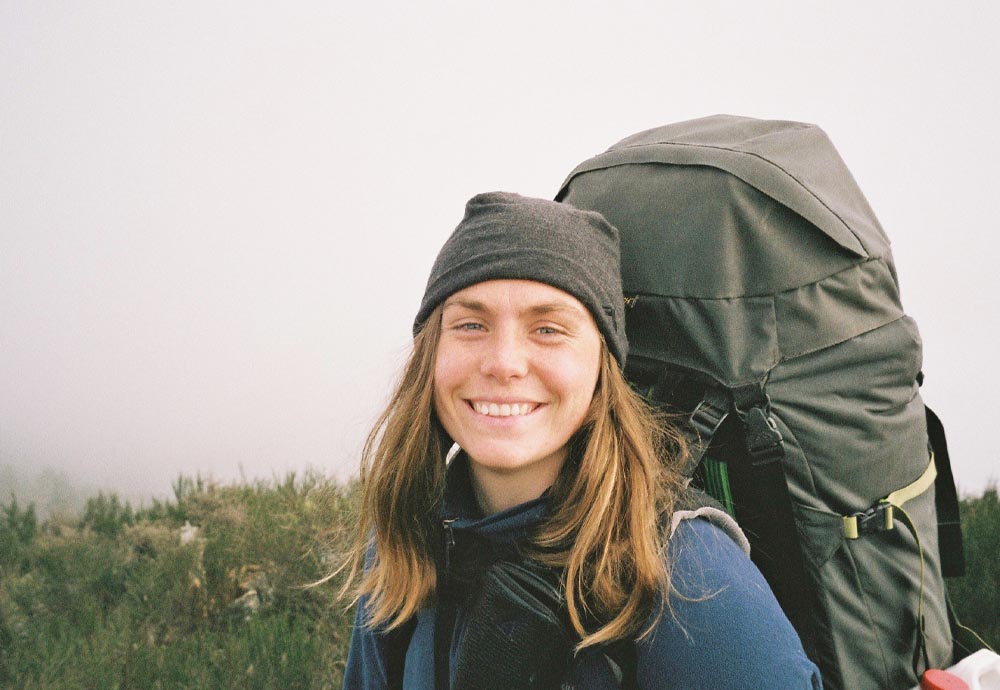
Since joining Land Information New Zealand two years ago as a geospatial information systems intern, Helen has gone from strength to strength and continues to look for innovative ways to protect New Zealand’s biosecurity using cutting edge technology.
She has been involved in a number of innovative initiatives that contribute to advancing New Zealand’s biosecurity and biodiversity.
In the National Wilding Conifer Control Programme (NWCCP), she has been instrumental in implementing the Wilding Conifer Information System (WCIS) and looking to further its function in new ways.
Finalist: Marion Schoof from AgResearch - AsureQuality Emerging Leader Award
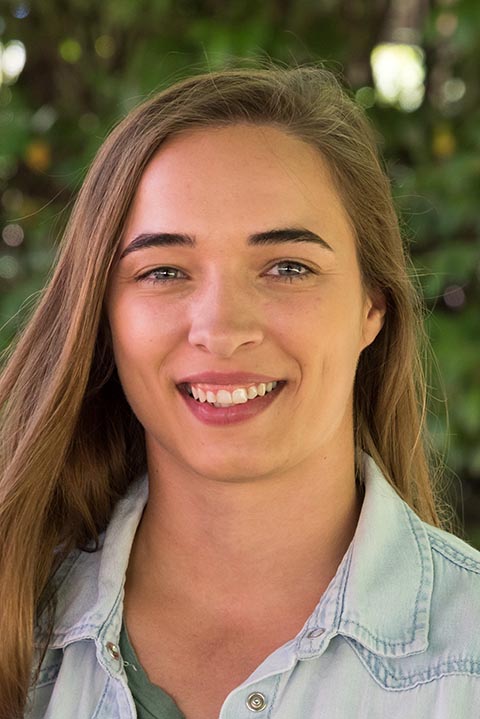
Marion Schoof is a very bright and intelligent early career scientist. She has spent more half a decade understanding different aspects of the Yersinia bacteria system and is very knowledgeable about almost every aspect of it.
In her recent PhD, she researched the secretion system of a Yersinia that is highly pathogenic against some of the worst invertebrate pest species in New Zealand such as grass grub (est. $215-585M), black beetle (est. $242M) and several porina species (est. $172M).
Her research has led to a better understanding of how to control the secretion of the major pathogenic components of the bacteria.
